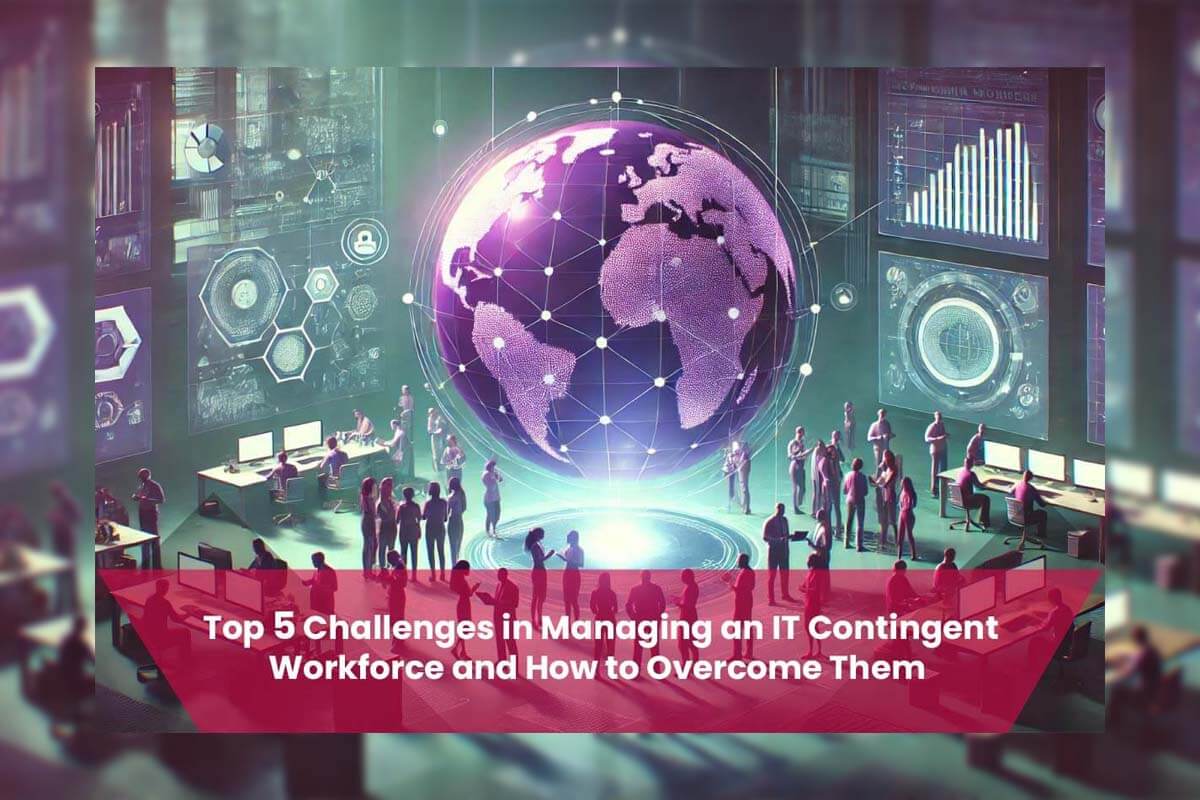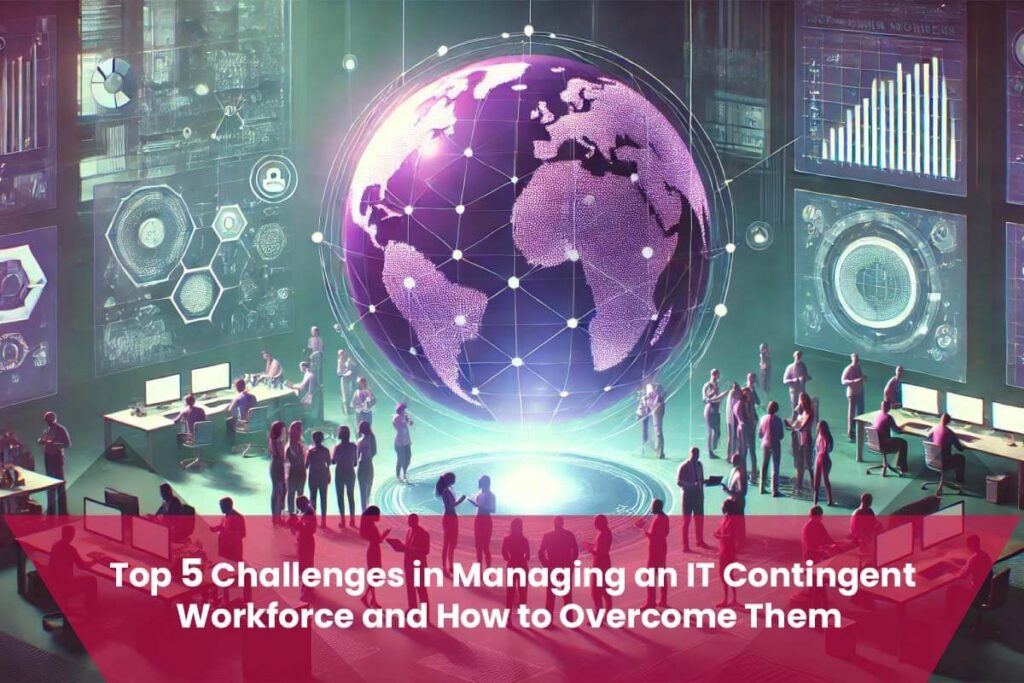





The utilisation of IT contingent workers has become a strategic necessity for Australian businesses navigating rapid technological advancements and fluctuating market demands. According to the Australian Bureau of Statistics, approximately 30% of the workforce now comprises non-permanent employees, highlighting a growing shift toward flexible labour solutions. IT contingent workers, including contractors, freelancers, and consultants, offer organisations the agility to scale their operations, access specialised skills, and meet project deadlines without committing to permanent hires.
While the benefits of this workforce model are evident, managing IT contingent workers presents unique challenges. Organisations often struggle with issues such as integrating temporary staff into established teams, ensuring compliance with complex employment regulations, and maintaining consistent performance standards. For instance, a Deloitte report notes that up to 40% of businesses find compliance with contingent workforce regulations burdensome, exposing them to potential legal risks.
Addressing these challenges is critical for businesses to maximise the value of their contingent workforce while safeguarding operational efficiency and regulatory adherence. This guide explores the top challenges in managing IT contingent workers and provides practical strategies for overcoming them, ensuring Australian businesses remain competitive in an evolving employment landscape.
Integrating IT contingent workers into an organisation’s existing teams and culture remains a significant challenge for Australian businesses. Unlike permanent employees, contingent workers are often brought in for short-term projects, leading to limited exposure to company values, workflows, and team dynamics. This lack of integration can result in reduced collaboration, slower project progress, and even disengagement among permanent team members. A 2022 Harvard Business Review study found that companies with poorly integrated temporary workers reported up to 20% lower productivity within project teams.
The transient nature of these roles makes IT contingent workforce integration especially complex. Organisations may neglect structured onboarding processes for IT contractors, assuming familiarity with similar roles. Without clear onboarding strategies for IT contractors, these workers may feel disconnected, slowing down their ability to contribute effectively. This gap not only impacts team culture but also reduces project success rates.
To address these challenges, businesses can:
These approaches ensure that contingent workers are well-positioned to align with company culture, enhancing productivity and reducing operational disruptions.
Ensuring compliance with Australian employment regulations for IT contingent workers presents a significant challenge for businesses. Unlike permanent employees, contingent workers operate under varied contract terms, requiring organisations to adhere to specific legal obligations regarding fair pay, workplace safety, and employment entitlements. Failure to comply with these requirements not only risks legal penalties but can also harm a company’s reputation and result in costly disputes.
One of the key complexities is navigating the Fair Work Act 2009, which mandates that all workers, including temporary and contingent staff, must receive fair remuneration and appropriate working conditions. Misclassification of contingent workers, such as incorrectly categorising contractors as independent workers, is a common compliance pitfall. According to the Fair Work Ombudsman, breaches related to wage underpayment or safety standards can result in fines exceeding $13,000 per violation for individuals and $66,000 for corporations.
To mitigate these risks, businesses must adopt a proactive approach to managing their compliance obligations. Key strategies include:
By prioritising compliance, businesses not only avoid legal risks but also foster trust and transparency within their workforce.
Resource Link: Visit the Fair Work Ombudsman website for up-to-date resources on employment standards and compliance guidelines.
Monitoring the performance and productivity of IT contingent workers is particularly challenging, especially in remote or hybrid work environments where visibility is limited. Unlike permanent employees, contingent workers often operate under short-term contracts and may lack the structured oversight that ensures accountability and alignment with business objectives. Without tailored performance management strategies, organisations risk inefficiencies, missed project deadlines, and subpar deliverables.
One of the core issues lies in establishing clear expectations and consistent evaluation methods. A Gartner report indicates that organisations with ineffective performance management for contingent staff report up to 25% lower project efficiency. Without well-defined Key Performance Indicators (KPIs), contingent workers may struggle to prioritise tasks or meet organisational standards.
To overcome these challenges, businesses should adopt a structured performance management framework tailored to contingent roles:
By leveraging these strategies, businesses can create an environment that fosters productivity and accountability while empowering contingent workers to perform at their best.
Effective communication and collaboration are critical for the success of IT contingent workers, yet these workers often face significant barriers due to their temporary roles or remote locations. Unlike permanent employees, contingent workers may lack access to the same communication channels or structured team meetings, leading to information gaps, reduced engagement, and delays in project outcomes. This disconnect can impact both individual performance and overall team cohesion.
A major challenge arises when organisations fail to establish clear communication protocols for contingent staff. For example, a lack of regular check-ins or insufficient access to collaboration tools can leave IT contractors feeling isolated, slowing progress and diminishing their sense of inclusion within the broader team. According to Atlassian’s State of Teams report, effective communication increases productivity by up to 20% in hybrid work environments, underscoring the importance of structured communication strategies.
To address these challenges, businesses should implement the following solutions:
By fostering an inclusive communication culture, businesses can bridge gaps between contingent and permanent staff, ensuring smoother collaboration and enhanced project outcomes.
Maintaining a positive relationship with IT contingent workers beyond their contract term is often overlooked but is essential for long-term business success. Many Australian organisations rely on these workers for critical projects, yet once a contract ends, valuable talent can be lost due to a lack of ongoing engagement. This challenge not only results in additional recruitment costs but also limits access to experienced professionals for future projects.
Contingent workers are less likely to return to organisations that fail to value their contributions or maintain professional relationships. According to a McKinsey report, businesses that invest in contingent worker satisfaction and retention reduce rehiring costs by up to 30% and maintain stronger access to skilled talent.
To build lasting relationships with contingent workers, businesses can adopt the following strategies:
By nurturing relationships with contingent workers, organisations can create a reliable network of skilled professionals ready to contribute to future projects. This proactive approach not only improves operational efficiency but also strengthens an organisation’s employer brand within the contingent workforce community.
Managing an IT contingent workforce presents a unique set of challenges that require a strategic approach to ensure success. From cultural integration and regulatory compliance to performance monitoring, communication, and talent retention, businesses must adopt tailored solutions to overcome these obstacles effectively. By implementing structured onboarding programs, compliance tools, and performance management frameworks, Australian organisations can optimise productivity, foster collaboration, and reduce risks.
The benefits of getting it right are clear—enhanced agility, operational efficiency, and access to top-tier talent. Proactively managing your IT contingent workforce ensures your organisation remains competitive and resilient in an evolving market.
Take the next step to optimise your IT workforce.
Visit Fort1’s IT Contingent Workforce Management Services to learn how we can help you address these challenges and maximise your contingent workforce’s value. Our tailored solutions empower your business to drive growth, achieve compliance, and maintain a competitive edge.
Contact us today to schedule a consultation and discover how Fort1 can transform your workforce management strategy.

Fort1 provides comprehensive cybersecurity solutions tailored to protect your business from evolving digital threats. With expertise in penetration testing, dark web monitoring, and managed detection services, we empower organisations to stay secure and resilient in the face of modern cyber challenges.
Copyright @2024 Fort1. All Rights Reserved by Fort1.